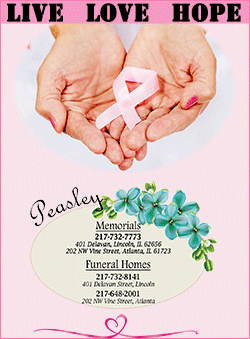|
 If you are 50 to 64, these tests for certain
cancers are recommended for your age and gender: If you are 50 to 64, these tests for certain
cancers are recommended for your age and gender:
Women
Breast Cancer Testing
Women ages 50 to 54 should get mammograms every year. Be sure you
understand the pros and cons of breast cancer screening.
Starting at age 55, you should switch to getting mammograms every 2
years, or you can continue to get one every year.
It’s important to know if you are at higher than average risk for
breast cancer. If you are, talk to a health care provider about
whether you need to get other tests done along with your mammograms.
It's also important to know how your breasts normally look and feel
and to report any changes to a health care provider right away.

Cervical Cancer Testing
Get a primary HPV test* every 5 years. If a primary HPV test is
not available in your area, then acceptable options include a
co-test (an HPV test done at the same time as a Pap test) every 5
years or a Pap test alone every 3 years. (*A primary HPV test is an
FDA approved test that is done by itself for screening.) The most
important thing to remember is to get screened regularly, no matter
which test you get.
No testing is needed after surgery that removed the cervix as long
as it was done for reasons not related to cervical cancer or
pre-cancer.
Women with a history of a serious cervical pre-cancer should
continue testing for 25 years after that diagnosis.
Colon Cancer Testing
All people at average risk should start testing at age 45, so talk
to your health care provider if you haven't started yet. There are
several testing options. Talk with a health care provider about
which tests are best for you and how often testing should be done.
[to top of second column] |

Lung Cancer Testing
If you are age 55 or older, talk to a health care provider about
your smoking history and whether you should get yearly low-dose CT
scans to screen for early lung cancer. Screening may benefit if you
are an active or former smoker (quit within the past 15 years), have
no signs of lung cancer, and have a 30 pack-year smoking history. (A
pack-year is 1 pack of cigarettes per day per year. One pack per day
for 30 years or 2 packs per day for 15 years would both be 30
pack-years.) You should discuss the benefits, limitations, risks,
and potential costs of screening with a health care provider before
testing is done. You also should find out how much the test will
cost – not all health insurances cover it.
Men
Colon Cancer Testing
All people at average risk should start
testing at age 45, so talk to your health care provider if you
haven't started yet. There are several testing options. Talk with a
health care provider about which tests are best for you and how
often testing should be done.
Prostate Cancer Testing
Starting at age 50, all men at average risk should talk with a
health care provider about the uncertainties, risks, and potential
benefits of testing so they can decide if they want to be tested.
Lung Cancer Testing
If you are age 55 or older, talk to a health care provider about
your smoking history and whether you should get yearly low-dose CT
scans to screen for early lung cancer. Screening may benefit if you
are an active or former smoker (quit within the past 15 years), have
no signs of lung cancer, and have a 30 pack-year smoking history. (A
pack-year is 1 pack of cigarettes per day per year. One pack per day
for 30 years or 2 packs per day for 15 years would both be 30
pack-years.) You should discuss the benefits, limitations, risks,
and potential costs of screening with a health care provider before
testing is done. You also should find out how much the test will
cost – not all health insurances cover it.
[American Cancer Society] |